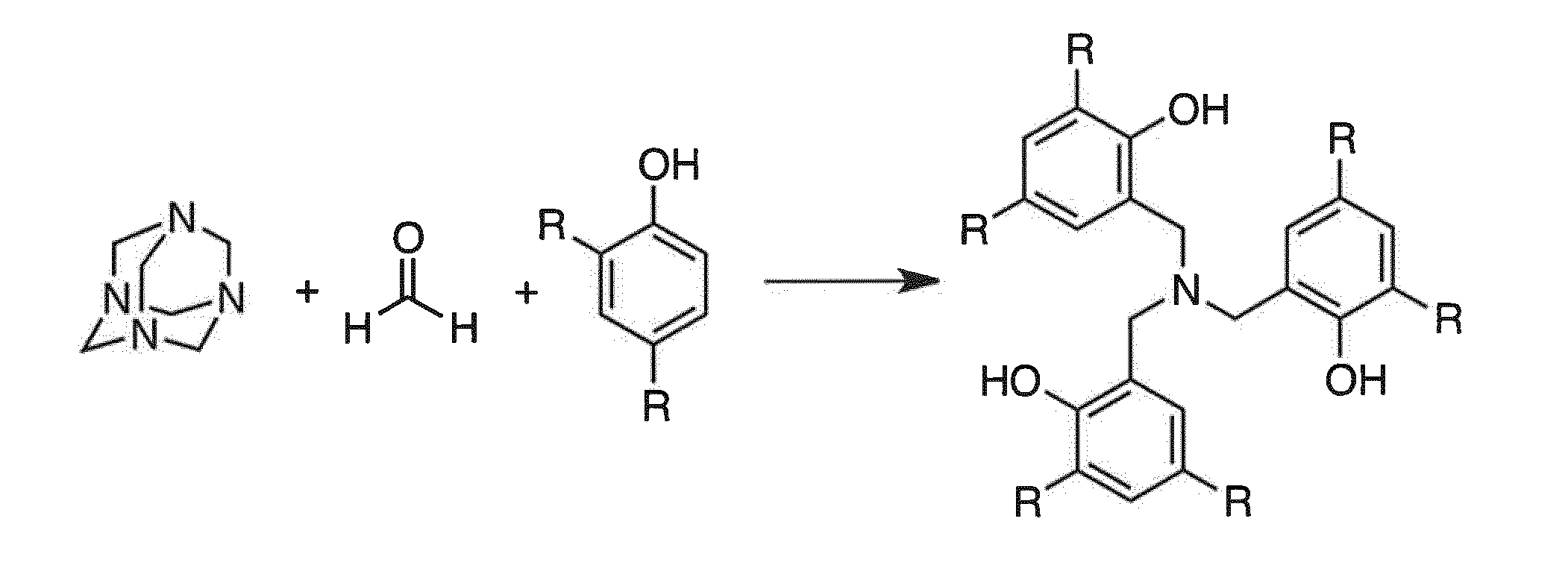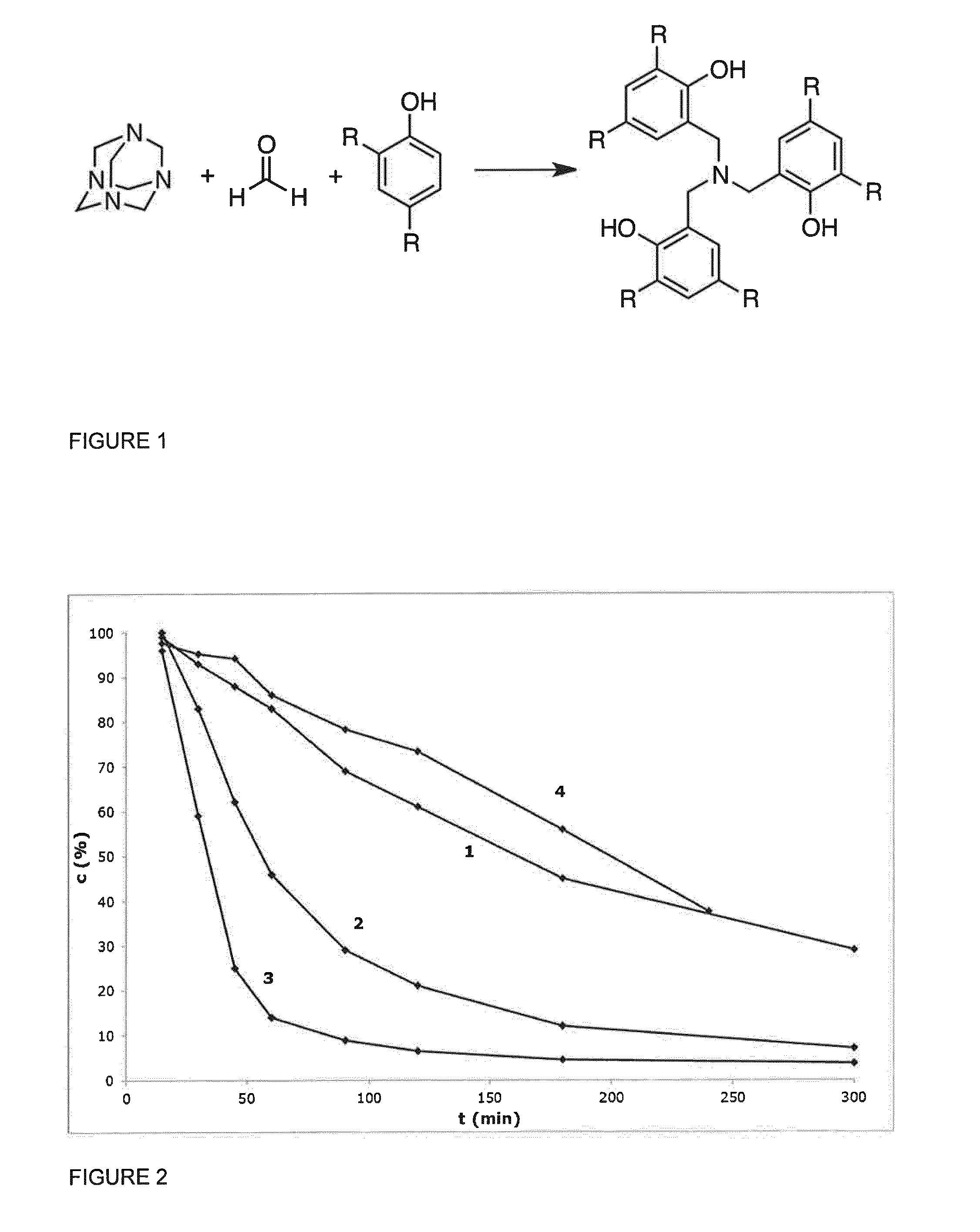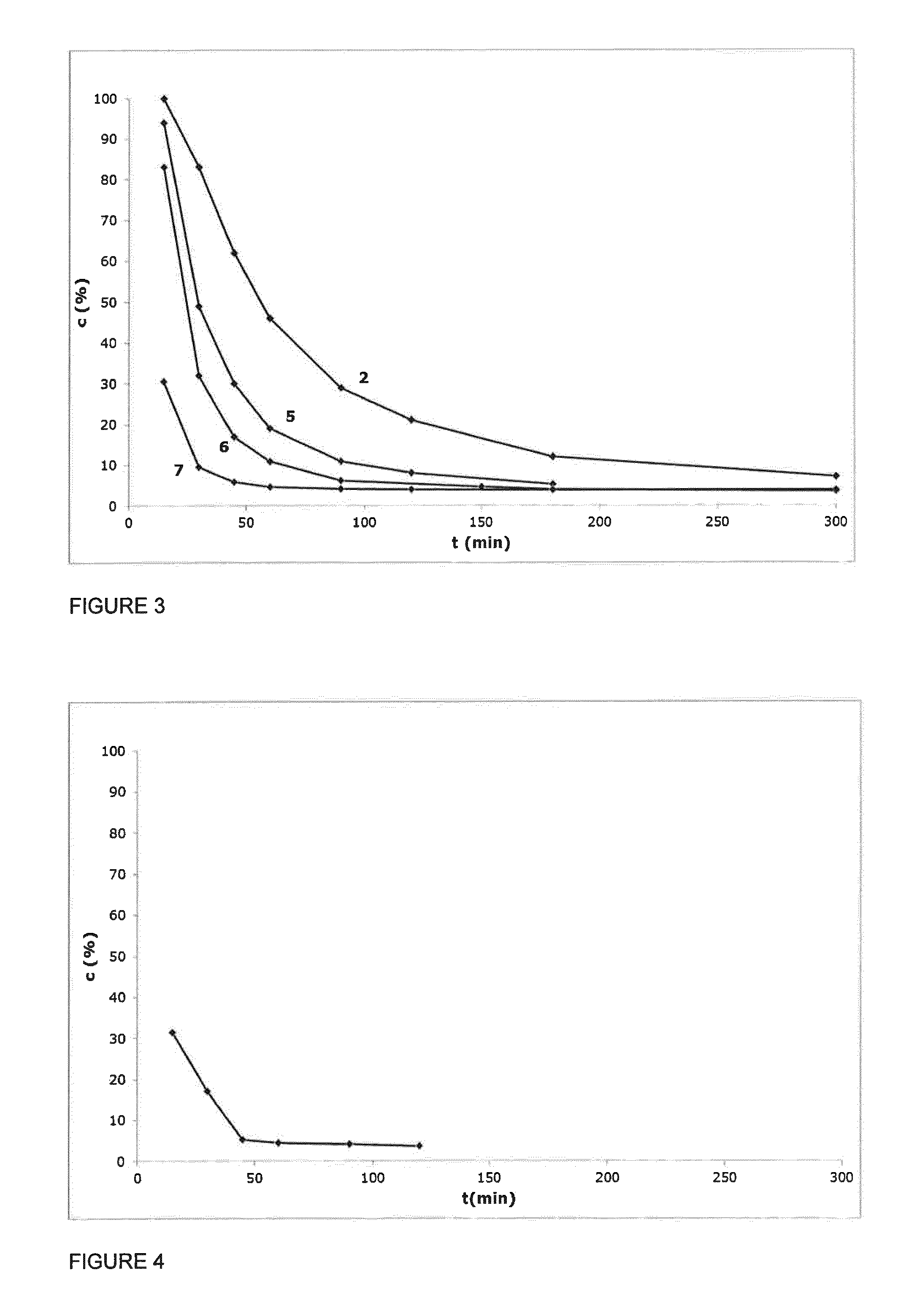Method to Manufacture PLA Using a New Polymerization Catalyst
a polymerization catalyst and polymerization technology, applied in the direction of group 4/14 organic compounds without c-metal linkages, etc., can solve the problem of difficult to achieve high molecular weight, achieve good or even improved polymerizing properties, and improve the effect of reducing the oxidation ra
- Summary
- Abstract
- Description
- Claims
- Application Information
AI Technical Summary
Benefits of technology
Problems solved by technology
Method used
Image
Examples
example 1
[0034]In a 1 L stainless steel batch reactor, 500 g L-lactide (PuraLact L®, Purac) was molten under nitrogen atmosphere and heated to 130° C.; a lactide melt sample of about 10 g was withdrawn for feed material analysis. Upon reaching 130° C., 0.15 g of Zr-catalyst complex II or 308 ppm was transferred into the reactor as a powder. The polymerizing melt was allowed to heat to 180° C. and the polymerization proceeded for 5 hours, while samples were taken after set time intervals to determine kinetics and the evolution of molecular weight. The absolute Mw was determined to be 94 kg / mol at a conversion of 71%. Mw versus PS was 256 kg / mol. The optical purity of the polymer was 99.4% L.
example 2
[0035]A polymerization was performed according to the procedure mentioned in Example 1, but the amount of Zr-catalyst complex II employed was 0.33 g or 676 ppm. The absolute Mw of the final PLA was determined to be 167 kg / mol at a conversion of 93%. Mw versus PS was 358 kg / mol. The optical purity of the polymer was 99.2% L.
example 3
[0036]Another polymerization was performed according to the procedure mentioned in Example 1, but the amount of Zr-catalyst complex II employed was 0.66 g or 1345 ppm. The absolute Mw of the final PLA was determined to be 134 kg / mol at a conversion of 96%. Mw versus PS was 276 kg / mol. The optical purity of the polymer was 99.0% L.
PUM
| Property | Measurement | Unit |
|---|---|---|
| Temperature | aaaaa | aaaaa |
| Temperature | aaaaa | aaaaa |
| Temperature | aaaaa | aaaaa |
Abstract
Description
Claims
Application Information
 Login to View More
Login to View More - R&D
- Intellectual Property
- Life Sciences
- Materials
- Tech Scout
- Unparalleled Data Quality
- Higher Quality Content
- 60% Fewer Hallucinations
Browse by: Latest US Patents, China's latest patents, Technical Efficacy Thesaurus, Application Domain, Technology Topic, Popular Technical Reports.
© 2025 PatSnap. All rights reserved.Legal|Privacy policy|Modern Slavery Act Transparency Statement|Sitemap|About US| Contact US: help@patsnap.com



